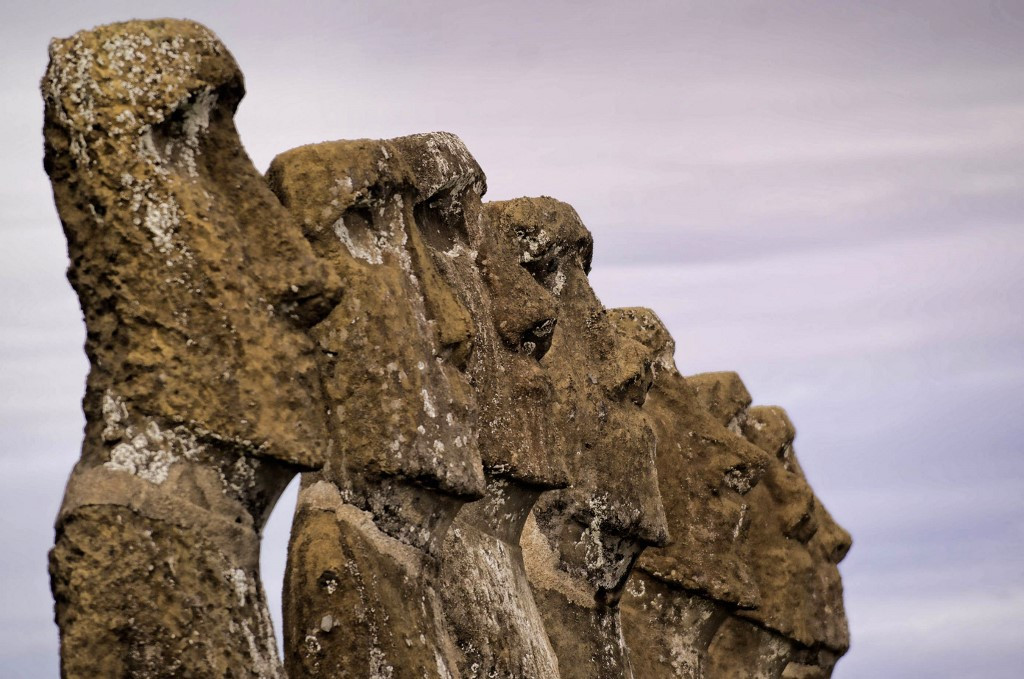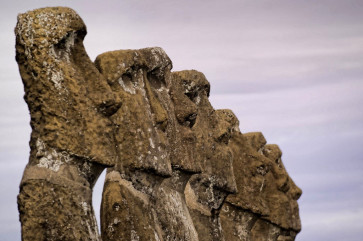Popular Reads
Top Results
Can't find what you're looking for?
View all search resultsPopular Reads
Top Results
Can't find what you're looking for?
View all search resultsIsland-hopping: Genetics reveal how humans settled remote Pacific
Research showed that over a 250-year period separate groups of people set out from tiny islands east of Tahiti to settle Easter Island, the Marquesas and Raivavae -- archipelagos that are thousands of miles apart but all home to similar ancient statues.
Change text size
Gift Premium Articles
to Anyone
 In this file photograph taken on July 13, 2010, Ahu Akivi Moais -- stone statues of the Rapa Nui culture -- are seen on Easter Island, some 3700kms off the Chilean coast in the Pacific Ocean, Easter Island's famous megaliths have relatives on islands thousands of miles to the north and west -- and so did the people who created them, a study said September 22, 2021. Research showed that over a 250-year period separate groups of people set out from tiny islands east of Tahiti to settle Easter Island, the Marquesas and Raivavae -- archipelagos that are thousands of miles apart but all home to similar ancient statues. (AFP/Martin Bernetti)
In this file photograph taken on July 13, 2010, Ahu Akivi Moais -- stone statues of the Rapa Nui culture -- are seen on Easter Island, some 3700kms off the Chilean coast in the Pacific Ocean, Easter Island's famous megaliths have relatives on islands thousands of miles to the north and west -- and so did the people who created them, a study said September 22, 2021. Research showed that over a 250-year period separate groups of people set out from tiny islands east of Tahiti to settle Easter Island, the Marquesas and Raivavae -- archipelagos that are thousands of miles apart but all home to similar ancient statues. (AFP/Martin Bernetti)
Easter Island's famous megaliths have relatives on islands thousands of miles to the north and west -- and so did the people who created them, a study said Wednesday.
Research showed that over a 250-year period separate groups of people set out from tiny islands east of Tahiti to settle Easter Island, the Marquesas and Raivavae -- archipelagos that are thousands of miles apart but all home to similar ancient statues.
"These statues are only on those islands that are closely connected genetically," the study's lead author Alexander Ioannidis of Stanford University told AFP.
Using cutting-edge analysis of modern DNA, Ioannidis and his team were able to map and date the first Polynesians' path of settlement, which began in Samoa and fanned out across the Pacific between the years 830 and 1360.
"This had been an open problem since Captain Cook first noticed that the people on the Polynesian islands were all speaking the same language," Ioannidis said.
The expansion happened rapidly -- over about 17 generations -- outpacing major changes in language or culture that could have served as markers, the findings show.
The researchers were able to piece together the puzzle of trans-Pacific migration by comparing the genetic material in 430 present-day inhabitants across 21 islands.
to Read Full Story
- Unlimited access to our web and app content
- e-Post daily digital newspaper
- No advertisements, no interruptions
- Privileged access to our events and programs
- Subscription to our newsletters
Purchase access to this article for
We accept



Redirecting you to payment page
Pay per article

Island-hopping: Genetics reveal how humans settled remote Pacific
Rp 35,000 / article
- Palmerat Barat No. 142-143
- Central Jakarta
- DKI Jakarta
- Indonesia
- 10270
- +6283816779933




Your Opinion Matters
Share your experiences, suggestions, and any issues you've encountered on The Jakarta Post. We're here to listen.
Thank You
Thank you for sharing your thoughts. We appreciate your feedback.
Share options
Quickly share this news with your network—keep everyone informed with just a single click!
Gift Premium Articles
to Anyone
Share the best of The Jakarta Post with friends, family, or colleagues. As a subscriber, you can gift 3 to 5 articles each month that anyone can read—no subscription needed!
Continue in the app
Get the best experience—faster access, exclusive features, and a seamless way to stay updated.










